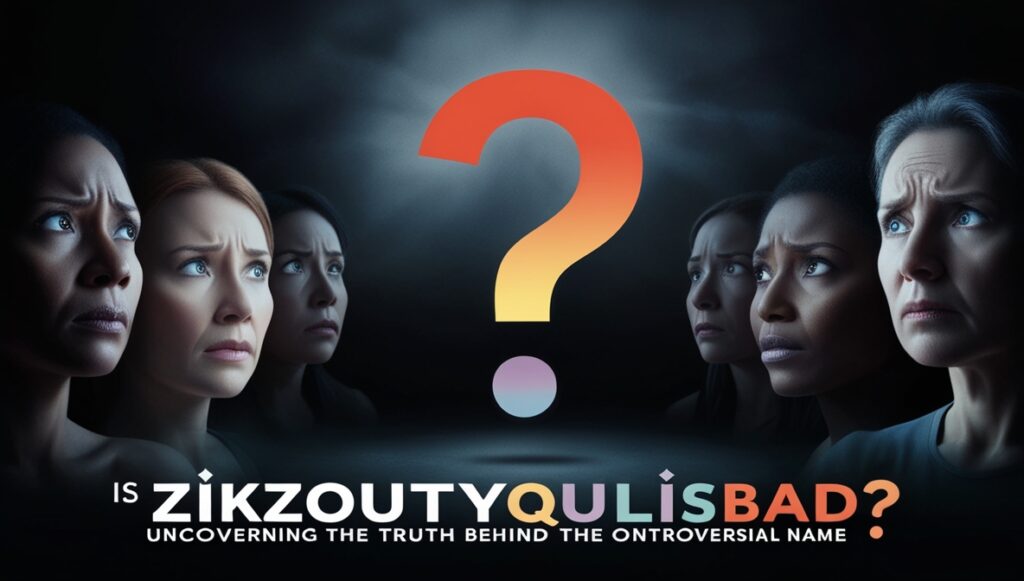Understanding Zikzoutyqulsis
Zikzoutyqulsis is a complex term that refers to a particular substance or phenomenon which has generated considerable interest across various scientific disciplines. The origin of the term is not well-documented, but it is believed to have emerged in contemporary scientific discourse, reflecting a growing focus on innovative materials and chemical processes. Zikzoutyqulsis exhibits a unique molecular structure that contributes to its distinctive operational characteristics. This substance is often characterized by its interplay between molecular bonds and reactive properties, making it notable in both theoretical and practical applications.
The discovery of Zikzoutyqulsis was met with a mixture of enthusiasm and skepticism within the scientific community. Researchers initially approached it as a potential marvel of chemistry, given its unusual properties that suggested application in a range of fields, including materials science, pharmacology, and environmental studies. As investigations progressed, initial reactions became more nuanced, with some experts emphasizing the need for a cautious examination of its implications and potential hazards. This duality of fascination and caution has persisted in discussions surrounding Zikzoutyqulsis, making it a significant topic for both inquiry and debate.
The applicability of Zikzoutyqulsis spans various domains. In materials science, it is studied for its potential to create nanoscale materials that could enhance the efficiency of solar panels and batteries. In the field of medicine, researchers are exploring Zikzoutyqulsis for its possible role in drug delivery systems, where its unique structural properties could facilitate targeted treatment. Furthermore, environmental scientists are investigating the substance for potential uses in remediation, where it may assist in cleaning pollutants from various ecosystems.
By exploring the multifaceted implications of Zikzoutyqulsis, it becomes evident that while it holds potential benefits, a thorough understanding of its capabilities is vital to addressing the question: is Zikzoutyqulsis dangerous?
Potential Risks and Dangers of Zikzoutyqulsis
Zikzoutyqulsis has garnered attention due to various health concerns associated with its use. The potential risks linked to this compound span a range of acute and chronic effects, raising questions about its safety profile. Numerous studies suggest that exposure to Zikzoutyqulsis may result in significant toxicity, especially in certain populations. For instance, research indicates that ingestion of Zikzoutyqulsis in concentrated forms can lead to severe gastrointestinal disturbances, including nausea and vomiting, which are symptoms that warrant careful consideration in both recreational and industrial settings.
Moreover, chronic exposure to Zikzoutyqulsis has been associated with more severe health implications. Long-term studies have shown a correlation between persistent exposure and the development of respiratory issues, possibly due to its impact on pulmonary function. This is particularly concerning for workers in relevant industries where Zikzoutyqulsis is prevalent. Environmental impact studies have also noted that Zikzoutyqulsis can contaminate groundwater, leading to broader ecological implications that may affect local flora and fauna. Instances of fish kills and altered behavior in wildlife have been attributed to elevated levels of this substance in water bodies, emphasizing its role as a potential environmental hazard.
A review of documented cases suggests that Zikzoutyqulsis has been involved in several incidents resulting in adverse effects on human health. For example, a cluster of health issues reported in a community near a Zikzoutyqulsis manufacturing plant raised alarms among health officials. Investigations confirmed elevated concentrations of the compound and its metabolites in local residents, correlating with increased instances of dermatological and neurological symptoms. Such findings underscore the importance of ongoing surveillance and risk assessment regarding Zikzoutyqulsis, as they contribute to a growing body of evidence regarding its potential dangers.

Regulatory Perspectives on Zikzoutyqulsis
The regulatory landscape surrounding Zikzoutyqulsis varies considerably across different countries and industries. Various health and safety organizations, as well as government agencies, have established guidelines to monitor and regulate the handling, production, and distribution of substances identified as potential health threats, including Zikzoutyqulsis. In many jurisdictions, the focus lies in ensuring public safety and environmental protection, particularly concerning substances that may pose health risks.
In the United States, the Environmental Protection Agency (EPA) plays a crucial role in regulating chemicals and substances that could be hazardous. Although Zikzoutyqulsis may not yet be comprehensively categorized under specific regulations, the EPA’s guidelines provide a framework for assessing its safety and the potential dangers it poses to both human health and the environment. Similarly, the Food and Drug Administration (FDA) oversees the use of various substances within the food and pharmaceutical industries, particularly to safeguard consumer health.
In the European Union, the REACH (Registration, Evaluation, Authorization, and Restriction of Chemicals) regulation serves as a stringent guideline to manage the risks associated with chemical substances, including new compounds like Zikzoutyqulsis. Under this regulation, manufacturers must provide safety data to prove that their products do not pose unacceptable risks. As Zikzoutyqulsis gains more attention in scientific research, it is likely that regulatory bodies will bolster their guidelines to address its safety effectively.
Despite existing frameworks, there is an ongoing debate about whether current regulations sufficiently address the potential dangers associated with Zikzoutyqulsis. Monitoring public health impacts and environmental consequences remains critical, prompting the need for adaptations in regulations as new information emerges. Overall, while measures are in place to mitigate risks, continual assessment and adjustment of the regulatory fabric is vital in ensuring the protection of public health against substances like Zikzoutyqulsis.
Conclusion: Weighing the Risks and Benefits of Zikzoutyqulsis
In evaluating whether Zikzoutyqulsis is dangerous, it is essential to analyze its potential risks alongside its benefits. Throughout this exploration, we have discussed various aspects of Zikzoutyqulsis, including its applications, effectiveness, and safety profile. As with many substances or practices, the danger often lies in the context of usage, dosage, and individual susceptibility.
Experts in the field have indicated that while Zikzoutyqulsis may offer significant advantages, such as therapeutic benefits or enhanced performance in certain scenarios, there are also inherent risks that cannot be overlooked. Issues surrounding misuse, lack of adequate regulation, and the potential for negative health impacts must be taken seriously. The subjective nature of its effects means that what works for one individual might not work for another, leading to adverse experiences.
Personal responsibility plays a critical role in ensuring the safe engagement with Zikzoutyqulsis. Users should remain informed about the product’s characteristics and associated risks, making it crucial to consult with healthcare professionals before initiating usage. Both individuals and organizations should actively prioritize education and awareness regarding Zikzoutyqulsis, potentially setting out guidelines for its responsible use and dissemination of information on safe practices.
It is recommended that those considering Zikzoutyqulsis weigh their potential needs against the documented risks, ensuring that they approach this substance with caution. As we conclude our investigation, it is imperative that readers formulate their opinions based on the comprehensive data presented. Engaging with this material critically will allow for a balanced perspective on whether Zikzoutyqulsis can be deemed dangerous or beneficial, thereby promoting informed decision-making in its utilization.
